If you live near a lake, river or oceanfront, you’ve undoubtedly seen increasing numbers of people on stand-up paddleboards (SUP). This popular activity is super fun and provides a great workout. You can make the experience even more rewarding, however, by using your off-the-board workout time to strengthen those SUP-specific muscles.
“Intelligent fitness training will directly enhance the muscular endurance required in paddle boarding, explains Cris Dobrosielski, head strength and conditioning coach for The San Diego Canoe, Kayak & Paddle Sports Club. “It will also decrease the likelihood of overuse injuries and make the entire experience easier, from carrying your board to getting back up when you fall in.”
“Beginners need more balance training and those looking to progress to the intermediate or advanced levels of SUP will see results come from core training,”Says Jen DuCharme owner of FLOW Outside in Bozeman, Mt. She is certified with PaddleFit and leads yoga and fitness classes on paddle boards. DuCharme believes that learning proper form and technique is key to enhancing the SUP experience.
Three Essential Components in a SUP-specific Workout
Balance
Having strong feet is an important component to staying upright on a paddle board. Exercising barefoot is an easy and effective way to train your feet and ankles.
Muscles
Core: The abdominal muscles help stabilize your body. When strong and engaged, they work as a team with the legs and arms to create more efficiency during SUP.
Legs: The quadriceps, hamstrings and gluteals support the body on the paddle board. The stronger they are, the easier it will be to stay upright while rowing.
Arms: The latissimus dorsi muscle in your upper back is one of the major movers for paddling, but so are the triceps, biceps, deltoids and pectorals.
All of these muscles are targeted during the SUP workout, below.
Movements
Finding a rhythm between staying stable and torso rotation is the key. As you get more advanced, the torso needs to rotate to move the paddle efficiently. Choosing exercises to mimic this movement helps train the right muscles.
Start doing the following exercises a few weeks before you plan to get out on the water. If you’ve already been SUPing, exercise is still beneficial to use on the off days. Dobrosielski says that swimming is an ideal way to get aerobic training, utilizes relevant muscles and motor patterns for SUP.
Stand Up Paddle Board Exercises
Perform each exercise for 30 to 60 seconds and repeat one to three times.
DORSIFLEXION
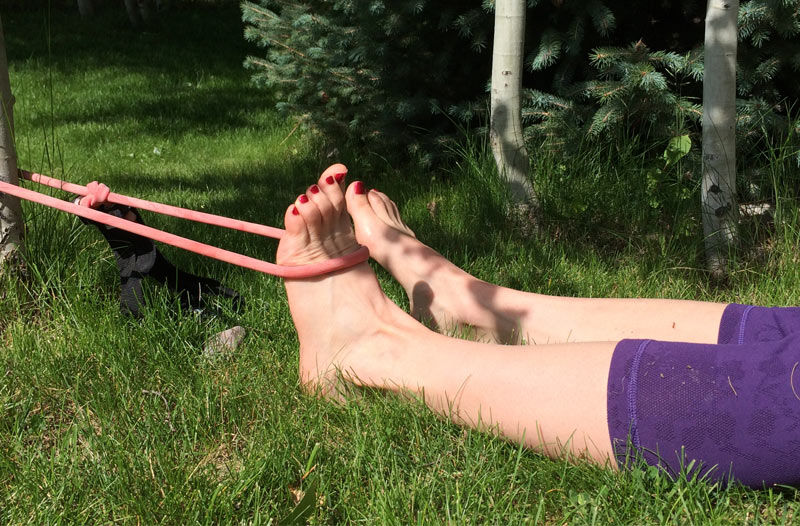
Goal: Strengthen ankle muscles for balance and stability
- Sit on the ground and wrap a band around the top of foot. Attach the band in front of the body to something that won’t move.
- Slowly pull the mid-foot toward the shin. Feel the shin muscles contract.
- Keep your toes relaxed, which will help you focus on using your ankle rather than your toe extensors.
TANDEM BALANCE
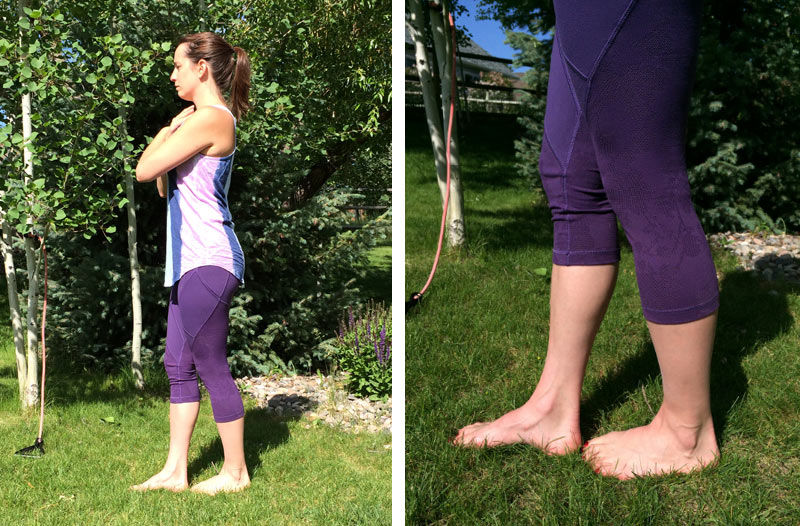
Goal: Strengthen the feet muscles and teach the body to balance on an unstable surface
- Place one foot in front of the other, heel to toe.
- Cross hands across chest.
- Hold for 30 to 60 seconds on each side.
Challenge: Close your eyes.
SINGLE-ARM PULL
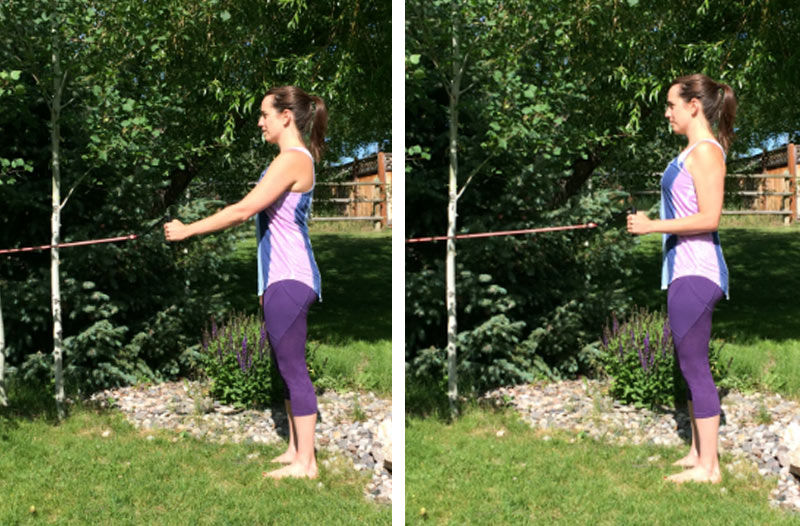
Goal: Train the arms and latissimus dorsi to move the paddle effectively
- Stand with feet hip-width apart. Pull a resistance band or cable back slowly.
- Stop the elbow at the side of the body and tuck the shoulder blade into the spine.
- Alternate pulling with the elbow bent and straight.
Challenge: Stand on the opposite leg as you pull and rotate the torso slightly.
OPPOSITE ARM AND LEG REACH
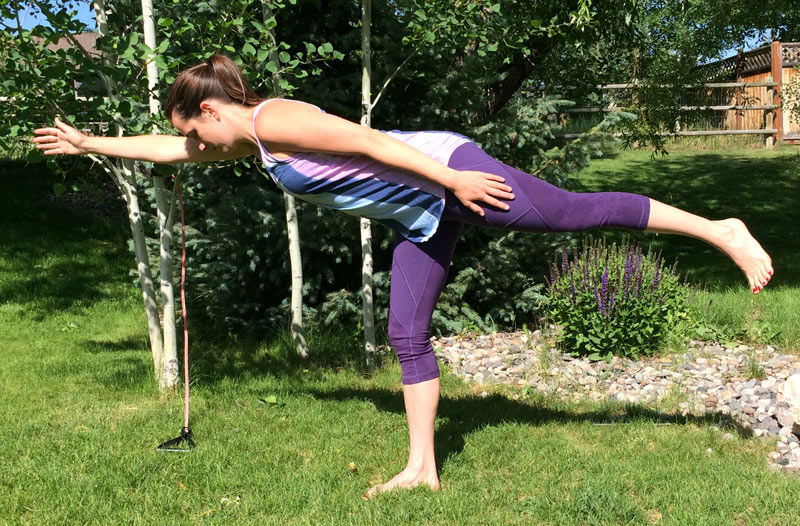
Goal: Strengthen the hamstrings with instability. Work one leg at a time, which can help strengthen your weaker leg.
- Stand on one foot and reach one leg back and the opposite arm forward.
- Try to get your body parallel to the ground.
Challenge: Repeat without putting your leg down and then switch sides.
PLANK HOLD

Goal: Strengthen the core and upper body muscles; make it easier to push up from a kneeling position on the paddle board and get back down when needed.
- Assume a push-up position, with hands under the shoulders and feet hip-width apart.
- Keep shoulders away from ears.
Challenge: Lift one arm off the ground and reach toward the sky. This will mimic the rotation required when on the board with the paddle and strengthen the core with a rotational component.
SQUATS
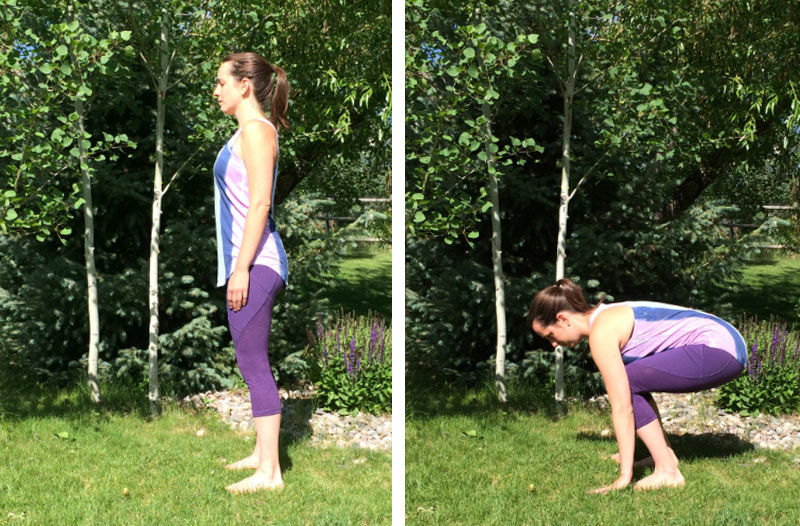
Goal: Strengthen the legs to help you get up and down from a kneeling position and stay in an athletic stance when rowing with the paddle.
- Stand with feet hip-width apart and press the hips back, as if sitting in a chair.
- Being able to touch the ground is a bonus and will help with transitions on the board.
Challenge: When you rise up from the squat, bring one knee up and stand on the other leg and hold for two breaths.




 by
by 







 by
by